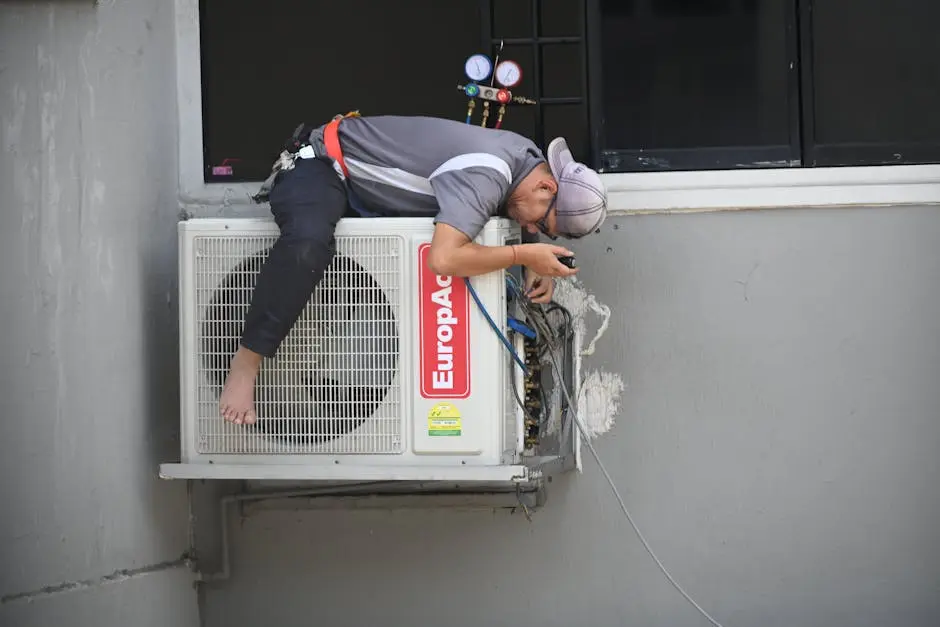Mini split air conditioners might sound like a complex topic at first, but they offer a versatile and efficient way to cool your space. Whether you’re a homeowner looking to optimize your home’s temperature or someone who’s just curious about how these systems work, this guide will break down everything you need to know in simple terms.
What is a Mini Split AC System?
A mini split AC system, also known as a ductless system, consists of an outdoor compressor and an indoor air-handling unit. These systems are perfect for cooling individual rooms or small areas, offering a customizable solution for your home or office.
Unlike traditional central AC systems that force air through ducts, mini splits allow you to control the temperature of individual rooms separately. This is particularly useful for households that want to save energy by cooling only the rooms in use. If you have an older home without ductwork, mini splits are a fantastic option because they are less invasive to install.
One of the standout features of mini split systems is their allowance for zoning. This means you can install multiple indoor units connected to a single outdoor unit, providing different climate controls in each room. Imagine being able to set the perfect temperature in your bedroom without affecting other spaces. This flexible setup not only saves energy but also increases your comfort.
The Key Components of Mini Split Systems
Mini split systems typically include an indoor air handler, an outdoor unit, and connecting pipes and cables. Understanding these components can help in maintaining and troubleshooting your system.
The indoor unit, often mounted high on a wall, is the part of the system that distributes the cooled or heated air into your living space. On the other hand, the outdoor unit hosts the compressor, which is essential for the cooling process. These units are connected by a series of pipes and cables, responsible for carrying refrigerant and power, making them integral to the system’s operation.
How Mini Split AC Works
The system works by transferring heat between the indoor and outdoor units. The refrigerant cools the air inside the room, making the space comfortable even in the heat of summer.
Mini split AC systems operate through a two-way process involving heat pump technology. During the cooling cycle, the indoor unit absorbs heat from inside the room through an evaporator coil. The refrigerant within this coil becomes vaporized, carrying the heat outdoors to the compressor, which then releases it. This cycle repeats, allowing your room to stay cool. The same system can be reversed during colder months to provide heating, making it a versatile solution for year-round climate control.
The efficiency of these systems comes from not having to heat or cool unused spaces. By using a technique called variable refrigerant flow (VRF), mini splits adjust the amount of refrigerant sent to each evaporator, ensuring that only the necessary amount of energy is used to maintain the desired room temperature. This is particularly beneficial when energy efficiency is a top concern.
Benefits of Using a Mini Split System
Mini splits offer several advantages, such as energy efficiency, easy installation, and the ability to cool specific zones. This translates to reduced energy costs and increased comfort.
One of the most appealing benefits of mini splits is their quiet operation. Unlike traditional HVAC systems that can be noisy, mini splits are barely noticeable, allowing you to maintain a peaceful environment at home. Additionally, by eliminating the need for ducts, you not only save on the cost and hassle of duct installation but also avoid energy losses associated with ductwork.
Mini split systems are also renowned for their flexibility and discretion in interior design. The units come in various sleek and modern designs that can seamlessly blend with your home décor. Whether you choose an unobtrusive wall-mounted or a subtle ceiling-recessed unit, these systems easily complement any style.
Installation Tips and Considerations
While professional installation is recommended, understanding the process can be beneficial. Key considerations include selecting the right size system for your space and ensuring proper placement for effective cooling.
Your installer will conduct a thorough assessment to determine the optimal location for both indoor and outdoor units. The challenge is to maximize cooling capacity while minimizing exposure to environmental factors that can affect performance, such as direct sunlight or strong winds. Correct placement not only enhances efficiency but also prolongs the lifespan of the system. It’s advisable to choose a professional with experience specifically in mini split installations to ensure you get the most out of your system.
Maintenance for Longevity
Regular maintenance is crucial for the longevity of your mini split AC. Learn simple steps like cleaning filters and checking for leaks that can prevent costly repairs and ensure efficient performance.
It is wise to schedule regular inspections with a certified technician who can closely examine components such as refrigerant levels, electrical connections, and motor operations. A clean system not only operates more efficiently but also provides better air quality, enhancing the health of your living environment. Moreover, implementing a proactive maintenance routine can identify minor issues before they evolve into significant problems, saving both time and potential repair costs.
Wrapping Up Your Mini Split AC Knowledge
By now, you should have a clearer understanding of how mini split AC systems work and whether they’re the right choice for your cooling needs. With their flexibility, efficiency, and ease of installation, they’re a fantastic option for many spaces. If you’re considering investing in a mini split system, make sure to evaluate your specific needs and consult with a professional installer to reap the full benefits. To learn more about our services and how we can assist you in choosing the right system, please visit our homepage.










